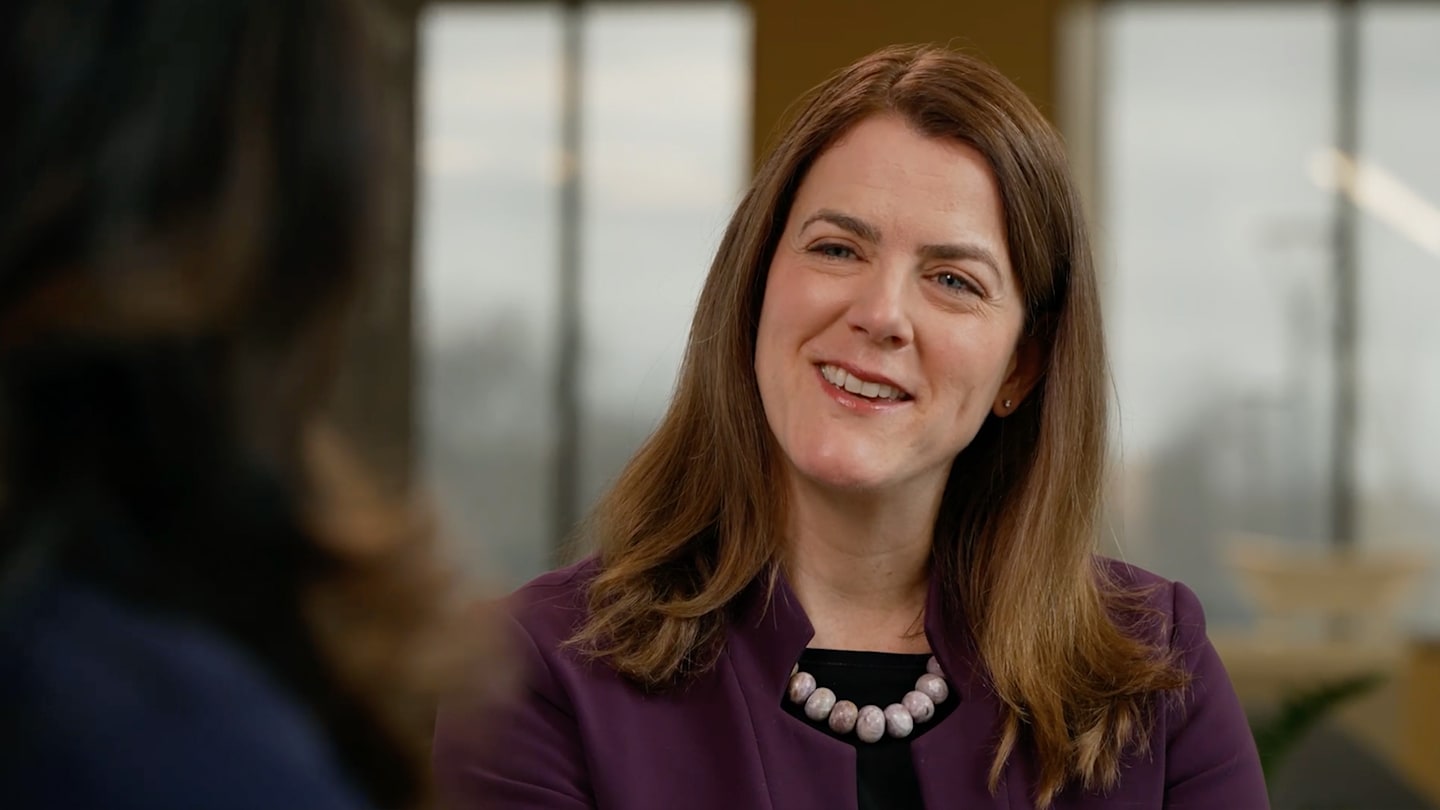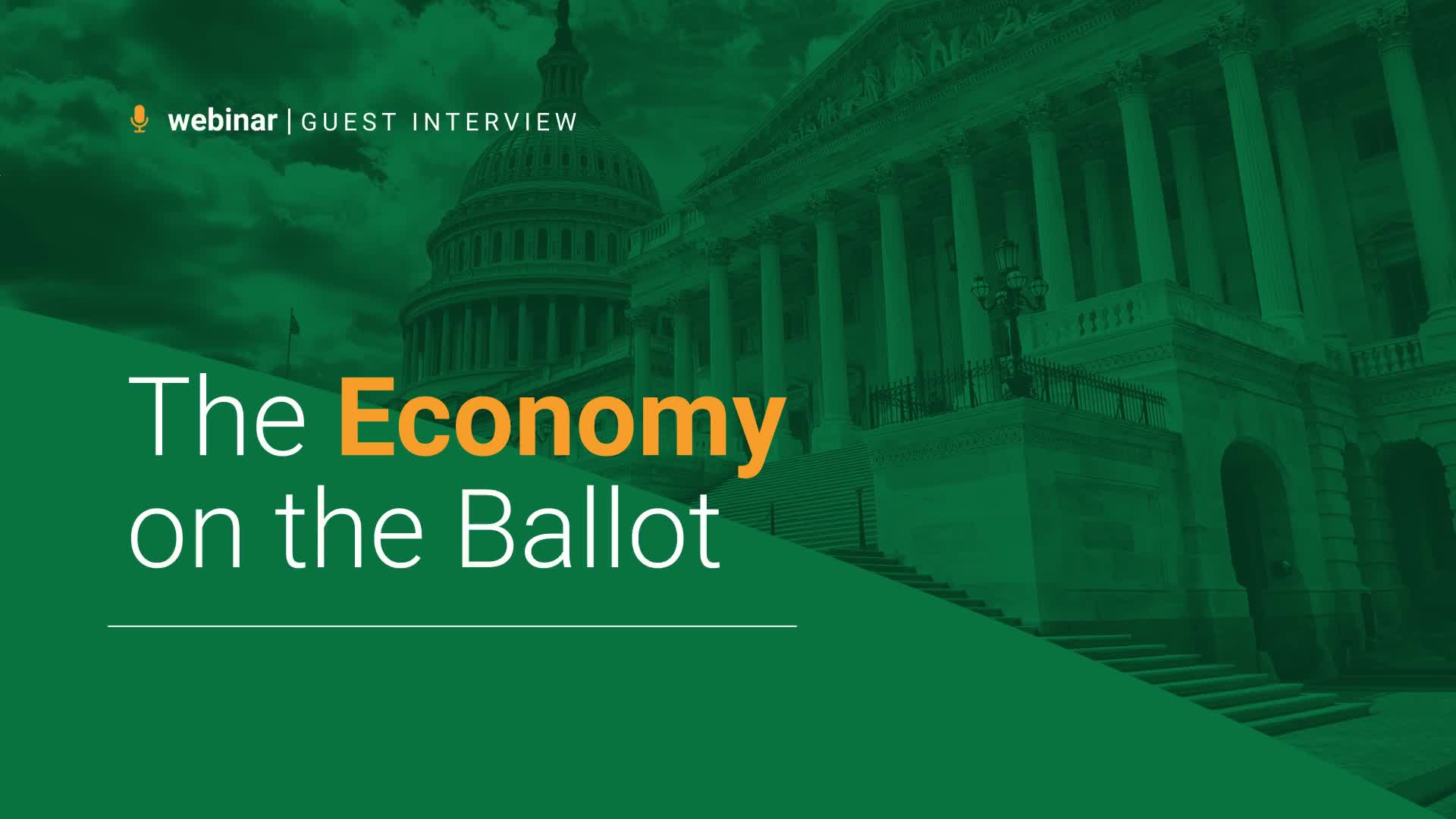The Economy on the Ballot
Both major parties in the U.S. presidential election have pointed to economic policies representing a changing role for the federal government. In our webinar, we discussed how economic thought has evolved—offering a new perspective on our choices today.

One of the nation’s leading historians, Jennifer Burns studies the history of ideas in politics and economic policymaking. She has written about economics and politics in numerous publications, including The Wall Street Journal, The Financial Times, and The New York Times. Her latest book, Milton Friedman: The Last Conservative, was just chosen as one of the best books of 2023 by The Economist.
Listen to our interview with Jennifer. Read key takeaways from the replay below.

Key Takeaways
Edited excerpts from our conversation with Jennifer Burns.
How has the interaction between the government and economic policy changed?
“The crisis of the Depression really changed what people wanted from their government.”
The birth of modern fiscal and monetary policy goes back to the Great Depression. The longest and deepest downturn in U.S. history lasted more than a decade with unemployment as high as 25%. It caught policymakers by surprise—they didn’t see it coming, didn’t know why it was lasting so long and didn’t know what to do about it.
Economist John Maynard Keynes argued that the government could revive the economy with expansionary fiscal policy—through taxing and spending. While this philosophy influenced Franklin Roosevelt’s New Deal program, it wasn’t until 1941 that the Depression ended as the government entered World War II and dramatically increased government purchases in industries that supported the war effort.
In 1963, Milton Friedman and Anna Schwartz published their research that concluded that a 30% contraction in the supply of money and the Federal Reserve’s (Fed’s) inaction to address it led to the Great Depression’s severity. From Friedman’s work, the “monetarist” school of thought emerged, which maintains that regulating the money supply is the most effective and direct way of regulating the economy.
How have responses to the Global Financial Crisis and the pandemic affected where we are today?
“The GFC in some way paved the way to where we are today because it seemed to suggest that there was no cost to stimulus.”
The Global Financial Crisis (GFC)1 did not approach the scope and scale of the Great Depression in part because policymakers reacted swiftly. In addition to direct government intervention, the Fed pulled out Friedman and Schwartz’s playbook and quickly lowered interest rates and implemented programs that helped keep money available and circulating. However, it’s important to note that these stimulus measures were directed at financial institutions, not consumers. Therefore, asset prices rose, but there was little impact on consumer prices.
In contrast, the pandemic stimulus was more what Friedman called a “helicopter drop” or “helicopter money.” This was his theory that getting more cash in consumers’ hands could keep economic activity from stalling out and prevent a recession. Both the Trump and Biden administrations implemented various fiscal stimulus programs, including a moratorium on student loan payments, protections for renters, deferral of payroll taxes and even direct checks. At the same time, the Fed and other central banks were using monetary tools to keep interest rates low and money circulating.
This combination of fiscal and monetary stimulus was unprecedented. While the world emerged from this crisis, it’s still dealing with the inflationary impact.
As government debt has grown, how does the government manage the deficit and could this election influence monetary policy decisions?
“This is a very high stakes election, and I assume that people in the Federal Reserve do not want to inject themselves into the election.”
Certainly, it's more difficult to retire and service debt when interest rates are high. Yet the U.S. is still in an enviable position where our Treasury offerings are still attractive across the globe. And they're attractive because the United States is perceived as politically stable. Furthermore, the independence of the Fed has contributed to the health of the system. (Find out why our investment professionals believe the Fed is tempering markets’ rate-cut expectations.)
The Fed has to think on two levels. One, we know monetary policy acts with a long and variable lag, so the chance of them being able to create economic conditions of one set or another by November is very unlikely. Nonetheless, the Fed is in the spotlight as it's perceived as a political actor, which can have a big effect on markets.
How could economic and monetary policies be affected if deglobalization trends continue?
“There are periods of deglobalization before in history and they're generally not pretty ... I think the United States has to be vigilant about deglobalization and not assume that it would all work out for the best.”
Our collective recent memory is perhaps dominated by the downsides of globalizations. However, going further back in history, we see severe consequences of a deglobalized world. Currently, monetary policy is linked through the shared culture of central banking as well as the enormous role that U.S. currency plays in the world. This has been an enormous asset that has allowed the U.S. to have its cake and eat it too in terms of spending and tax cuts.
Why does Milton Friedman’s work still resonate with policymakers?
“I would say this was sort of Milton Friedman's secret to his success … he took the long view. He and Anna Schwartz were looking at 150 years of monetary history. And so he was thinking in the 1950s and 1960s about inflation when most people weren't thinking about inflation. He was thinking about the difference between nominal and real interest rates, which seems very obvious to us, but people really weren't thinking about it because they weren't thinking about inflation. 2 He was thinking about what happens with interest rates in a high inflation environment. He was looking at the monetary aggregates and thinking how those play out. And so he saw things that other people didn't see because his frame of reference was so much broader.”
Learn more about Investing During a Presidential Election Year.
Explore More Insights
Read our latest articles and market perspectives.
Great Financial Crisis refers to a period during the late 2000s marked by drastic decline in economic activity that is considered the largest such downturn since the Great Depression triggered by the U.S. stock market crash in October 1929.
Nominal interest rates do not account for inflation while real interest rates do.
The views expressed in this presentation are the speaker’s own and not necessarily those of American Century Investments. This presentation is for general information only and is not intended to provide investment, tax or legal advice or recommendations for any particular situation or type of retirement plan. Please consult with a financial, tax or legal advisor on your own particular circumstances.
Jennifer Burns is not affiliated with American Century Investments.